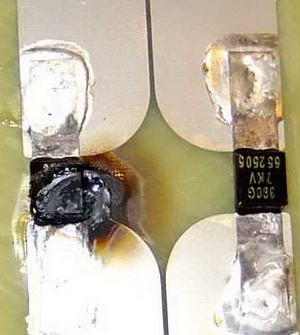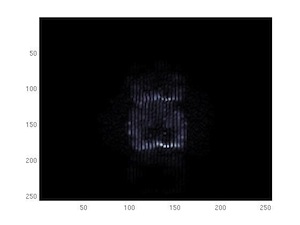 | Info
Sheets |
| | | | | | | | | | | | | | | | | | | | | | | | |
 | Out-
side |
| | | | |
|
| |
 |
Dear Guest, Your Attention Please: |
|
|
In the next days, the daily page limit for non-members will
decrease to 20 pages to split up resources in favour of the MR-TIP Community.
Beyond this limitation, most resources will still be available for everyone.
If you want to join the MR-TIP Community, please register here.
|
|
| | | |
| Result: Searchterm 'Element'
found in 5 messages |
| Result Pages: [1] |
More Results:  Database (40) Database (40)  News Service (6) News Service (6)  Resources (9) Resources (9) |
|
|
Costel Chiru
Thu. 1 Dec.16,
21:13
[Start of:
'GE Signa Explorer'
0 Reply]

 Category: Category:
General
|
| GE Signa Explorer |
Did anyone know how many coils elements could be simultaneously connected to 16 ch GE Signa Explorer?rnThanks!
|
| |  Reply to this thread Reply to this thread
(login or register first) | |
Clifford Thornton
Thu. 30 Jun.16,
17:48
[Start of:
'Max. SAR per second - Whole Body (Normal, 1st Controlled, 2nd Control)'
0 Reply]

 Category: Category:
Safety
|
| Max. SAR per second - Whole Body (Normal, 1st Controlled, 2nd Control) |
Hello fellow imaging technologists & professionals!
I'm involved in the development of a new type of cardiovascular medical device.
This device employs MRI technology/scans to power, guide, and control the medical devices and their active elements.
I conducted some research into the following question, "How much x-ray energy is allowed within a human every sec from a MRI machine?"
With regards to SAR rates, I understand that these are the upper-limits for the various settings for a full-body scan:
Normal setting: Whole body SAR - 2
1st Level Controlled: Whole body SAR - 4
2nd Level Controlled: Whole body SAR - >4
Would you agree with these calculations that I performed, and if not, why? And what would be a better way to calculate this?
For WHOLE BODY SAR:
-SO IF IN NORMAL MODE FOR MRI, THE MAX. ALLOWABLE SAR IS "2" OVER A 6 MIN. PERIOD, THEN
-6 MIN. = 360 SECONDS
-2 / 360 = 0.00555
FOR 1ST LEVEL CONTROLLED:
-SO IF IN 1ST LEVEL CONTROLLED FOR MRI, THE MAX. ALLOWABLE SAR IS "4" OVER A 6 MIN. PERIOD, THEN
-6 MIN. = 360 SECONDS
-4/ 360 = 0.01111
Other questions -- What is the difference between normal setting, 1st conrolled and 2nd controlled?
What is the clinical purpose of these various settings?
Any insights that you would be willing to share in regards to the above would be greatly appreciated!
I was trained and registred as a diagnostic echocardiographer, specializing in cardiovascular ultrasound, therefore I need help with MRI information/specifications. I am now focusing on the medical device field, but this technology/device happens to be highly dependent on MRI technology.
Any help from the group would be greatly appreciated!!
Thanks & regards,
Clifford Thornton
|
| |  Reply to this thread Reply to this thread
(login or register first) | | |
|
Alexey Bobrov
Wed. 5 Jun.13,
14:08
[Start of:
'Help to identify'
1 Reply]

 Category: Category:
Equipment
|
| Help to identify |
Hi all!
Help me please identify burned element on the photo.
490G 7KV 652505 written on it. What is this and where can I bye it or similar?
This is Siemens Magnetom Trio A Tim System 2008 year
Thanks in avance!

|
|  View the whole thread View the whole thread |  Reply to this thread Reply to this thread
(login or register first) | |
Steven Ford
Tue. 31 Jan.12,
08:19
[Reply (1 of 2) to:
'RF shimming'
started by: 'Reader Mail'
on Thu. 1 Oct.09]

 Category: Category:
Basics and Physics
|
| RF shimming |
For Magnetic fields, the overall field is adjusted to push it up a little bit in one spot and push it down a little bit in another area. The goal is to create a field that's perfectly homogenous.
The RF field created by the transmit coil likewise must be as homogenous as possible, so that the flip angle is constant throughout the imaging volume. In the past, designers have solved this problem by building coils such as the 'birdcage' style that would create a very even amount of energy inside. This is one reason why the transmit coils tend to be large.
With the advent of 3 Tesla and stronger magnets, the RF resonant frequency also rises. RF energy absorbed in the patient rises with the higher frequencies also, and another problem raises its head: it's a lot harder to make a very homogenous RF field. Even if you are scanning phantoms, the inside tends to be subject to different energy than the edges.
But in the human body, there are all sorts of irregular lumps and bumps that absorb RF differently, further complicating matters.
Now, on modern scanners it's possible to perform a magnetic field shim with the patient actually in the magnet in order to compensate for minute changes in the magnet from one exam to another. For super-high field magnets, an RF shim is also a handy thing to do.
If you have a Multi element RF transmit coil (regular phased array coils are just for receiving) you can run a program which selectively turns up the power in some elements so that the overall signal received is maximized. That's an RF shim.
Steven Ford
Professional Imaging Services, Inc.
|
|  View the whole thread View the whole thread | | |
Reader Mail
Tue. 26 Jul.11,
14:05
[Start of:
'MR750: ASSET Artifact or 32 Channel coil?'
1 Reply]

 Category: Category:
Funktional MRI
|
| MR750: ASSET Artifact or 32 Channel coil? |
Hi,
We are performing fMRI on a GE MR750 Discovery.
As you can see we get artifacts when performing DTI and fMRI.
It looks like herringbones or spikes artifacts. But it appears only at the very top slices where there is generally no more brain.
One possible explanation is that ASSET will produce the artifact where there is no signal.
Another explanation would be that some element of the 32 channel coil is going mad.
Has anybody experienced the same artifact?
Thank you.
 DTI artifact DTI artifact


|
|  View the whole thread View the whole thread |  Reply to this thread Reply to this thread
(login or register first) |
| |
| | Result Pages : [1] | |
|
| |
 | Look
Ups |
| |